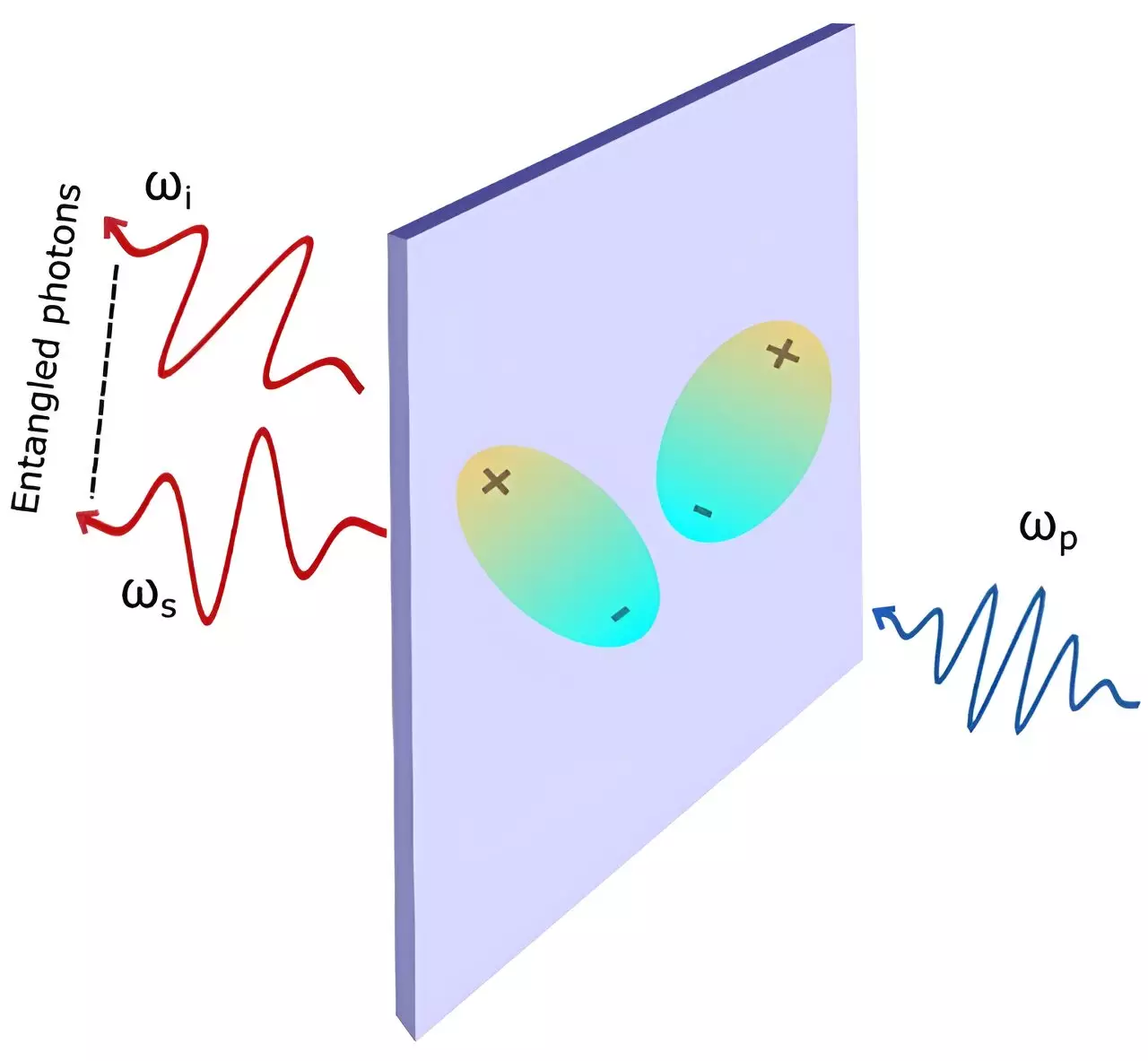Quantum entanglement represents one of the most intriguing phenomena in contemporary physics. It denotes a unique relationship between quantum particles, whereby the state of one particle is intrinsically linked to the state of another, regardless of the distance separating them. This characteristic forms the bedrock of various quantum technologies, including quantum computing and secure communication systems. The recent revelations from researchers at the National University of Singapore (NUS) regarding excitonic resonances offer promising insights that could significantly improve the efficiency of generating entangled photon pairs, thereby enhancing the prospects for ultrathin quantum light sources.
The generation of entangled photons traditionally involves a process called spontaneous parametric down-conversion (SPDC). In this process, a pump beam—a specific light source—is directed into non-linear optical crystals, instigating a transformation where a single photon splits into two entangled photons. However, this process is often hampered by its inefficiency, which has spurred ongoing research into improving its viability. The NUS research team, guided by Associate Professor Su Ying Quek, examined the underlying excitonic interactions within these non-linear optical crystals, revealing groundbreaking possibilities for enhancing SPDC efficacy.
At the heart of this innovation lies the concept of excitons, which are pairs of opposite charges generated when light interacts with the crystal lattice of the material. These excitons arise when electrons, upon gaining energy from the incident light, leave behind positively charged holes after recombination. The researchers demonstrated that the efficiency of the SPDC can experience a substantial boost through many-body excitonic interactions as these charges aggregate closely together. The proximity of excitons increases the probability of transitions between fundamental excitations, thereby enhancing the likelihood of successful photon pair generation.
The power of the NUS team’s progress lies in its reliance on comprehensive quantum mechanical calculations. By meticulously analyzing the non-linear optical responses of crystals as influenced by excitonic effects, the researchers diverged from traditional methods that often overlook these interactions. Dr. Fengyuan Xuan, the study’s lead author, articulated that the nuanced interaction between negative and positive charges significantly alters the SPDC dynamics. Their work underscores the inadequacy of conventional treatments in capturing the complexities of excitonic behavior and their ramifications on SPDC efficiency.
The study’s implications extend to the exploration of ultrathin crystals, which have often been dismissed in SPDC applications due to concerns about efficacy reduction correlating with smaller material volumes. Yet the findings indicate that these ultrathin architectures, when endowed with pronounced excitonic interactions, may overcome previous efficiency hurdles. The team focused on NbOI2, a layered non-linear optical material, applying their theoretical frameworks to assess both SPDC and its reverse process, second harmonic generation (SHG). Their simulations aligned strikingly well with previously obtained experimental data, validating their approach and suggesting a newfound pathway to producing entangled photons in practical settings.
The potential ramifications of this research are extensive, particularly as society leans more toward integrating quantum technologies into daily applications. The ability to deploy ultrathin materials capable of efficiently generating entangled photons can revolutionize current methodologies in quantum optics. Professor Quek remarked that harnessing the enhanced excitonic interactions in ultrathin crystals could facilitate easier integration into hybrid quantum-photonic devices, paving the way for next-generation quantum systems.
As the quest for efficient quantum light sources continues, the NUS team’s pioneering study marks a significant turning point in the quest for enhanced photon entanglement. By including excitonic interactions in their theoretical models, they have illuminated a path towards optimizing SPDC processes and transforming ultrathin materials into powerful players in quantum technology. These findings not only enrich the understanding of quantum phenomena but also lay crucial groundwork for advancements that could shape the future of quantum communications and computing. The interplay between physics and technological innovation remains a fertile ground for exploration, promising an exciting horizon for researchers and practitioners in the field.

